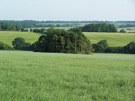Has farmland peaked?
Farmland values climb to a milestone high but one agency is calling the top of the market


Average bare land prices have hit £5,000 an acre for the first time, according to Smiths Gore. The reason is supply and demand with prices continuing to rise as the supply of land to buy remains low and demand remains strong - particularly from farmer buyers.
The lack of supply driving up competition is becoming a vicious circle. Before the 1990s around 4% of land would be sold in a year - so on average farmers knew that there would be an opportunity to buy neighbouring land once every 25 years or so. Now, as the volumes of land traded have dropped so much, the opportunity might only happen once in a lifetime, says Dr Jason Beedell, head of research.
Smiths Gore says bare land prices rose to £5,100 per acre, up 6% between April and June, and are now up 7.5% over the last year. This continues a three year trend of rising prices. 7,500 acres were for sale in the quarter, 17% less than in the same period in 2009 (9,000 acres).
The strength of the market for land is highlighted by the relative weakness of the market for farms with houses and buildings. While bare land values have risen 7.5% in the past year, the value of equipped farms has only risen by 2%. This is because of the weakness in house prices which are often a major element of the value of a farm and non-farmer buyers being more affected by the recession.
Head of National Estates and Farm Agency, Giles Wordsworth comments: 'The level of interest in farms that we are experiencing confirms that there is considerable demand for both parcels of land and farms despite economic circumstances. Investment in agricultural property continues to remain counter-cyclical to a recession which is borne out in the values currently being witnessed.'
The outlook for land prices is looking more uncertain now than it has been for a while as there are a number of issues on the horizon which could make the market falter, says the agency. Values might be reaching such heights that farmers cannot justify paying more. Smiths Gore have heard comments like this from large scale, efficient farm businesses which have always been in the market for more land. If this happens, prices should be flatter - maybe increasing by a few percent a year.
'Land for sale almost always reduces before a reform of the Common Agricultural Policy and the 2013 reform could be more radical than expected. We expect subsidies for farming - direct payments - to be cut, possibly by around 20%, and for farmers to have to do more environmental work for them. Both of these changes will reduce farmers' confidence and negatively impact land markets.
Exquisite houses, the beauty of Nature, and how to get the most from your life, straight to your inbox.
'The possibility of introducing a cap on farm subsidies will hit the UK disproportionately. Larger farms will need to review their holdings which may lead to them being split. Reducing greenhouse gas emissions from farming is being discussed by European and British farm ministers. We predict that the CAP reform will also include the introduction of criteria to mitigate the effects of climate change. How this would be implemented is unclear at present. It could be in the form of payments to farmers but we think it may also be accompanied by taxes on sprays and fertilisers. This type of regulation has already been signalled by the UK Government's Committee on Climate Change back in June.'

